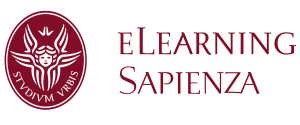Perfilado de sección
-
MOLECULAR BIOLOGY
OBJECTIVES
The course provides an overview of modern molecular biology and basic technologies for the manipulation of DNA. The course objective is to acquire knowledge of the molecular mechanisms that allow
the maintenance, regulation and expression of the genome. These skills play an important role in research and development of new drugs, and applications in biotechnology and biomedicine.PROGRAM
The structure of nucleic acids:
The discovery of DNA: historical perspectives. Nucleosides and nucleotides. Primary and secondary structures of DNA. Alternative forms of the double helix (A, B, Z). Properties of DNA; hypercromic effect. Tertiary structure of DNA: DNA supercoiling. Topoisomerases. Sequencing and synthesis of oligonucleotides.
The organization of the genome
From nucleotides to chromatin. The project genome; sequenced genomes. Prokaryotic genome. Structure and organization of the eukaryotic genome, gene families. The bacterial genome. The plasmids. Bacteriophages. DNA viruses. The mitochondrial DNA. RNA genomes. Chromatin structure (the nucleosome, the 10 nm fiber, the 30-nm fiber). Euchromatin and heterochromatin.
The structure of RNA
Secondary and tertiary structure of RNA. Biological functions of the different types of RNA. Catalytic RNAs. The ribozymes. The RNA world.
DNA replication
Semi-conservative replication of DNA. Mechanism of DNA replication in prokaryotes and in eukaryotic cells: initiation, elongation and terminatio; proteins and enzymes involved in replication. Telomere maintenance: the role of telomerase in DNA replication, aging and cancer.
The mechanisms of DNA repair and recombination
Mutations. Classification of DNA damage. Replication errors. Repair systems for damaged bases (BER, NER, MMR) and DNA strand breaks (SSB repair and DSB repair by NHEJ and HR). Homologous recombination and transposition of DNA (transposons and retrotransposons).
The transcription in prokaryotes
The mechanisms of transcription. The structure of bacterial promoters. The structure of bacterial RNA polymerase. Regulation of the lactose operon (lac). The transcriptional attenuation of the tryptophan operon (trp).
The transcription in eukaryotes
The components of the general transcription machinery. The structure of RNA polymerase II. The mechanism of transcription by RNA polymerase II. The general framework of transcriptional regulation. The transcription factors. DNA binding domains and motifs in protein (main protein domains). Regulation of transcription (coactivators and co-repressors). The assembly of the transcription complex. The model of enhanceosome.
Epigenetic
Histone modification (methylation and acetylation). DNA methylation. CpG islands. Chromatin remodeling. The imprinting. X chromosome inactivation
The modification of RNA
RNA chemical modification (snoRNP and ribosomal RNA). RNA splicing. Introns capable of autosplicing (group I and II). Assisted splicing and spliceosome. The modifications to 5 'and 3' ends of mRNA. Alternative splicing. RNA editing. The transport of mRNA.
Translation
The genetic code. Structure and assembly of ribosomes. The aminoacyl-tRNA synthetase and loading of aminoacil-tRNA. The proofreading activity of aminoacyl-tRNA synthetase. Translation factors. Translation beginning. Elongation. Peptide bond formation and traslocation. Termination. The translation in eukaryotes. Translation factors in eukaryotes and differences with prokaryotes. Translational and post-translational control.
Regulatory RNAs
Post-transcriptional gene regulation by microRNAs. Production and function of miRNA and siRNA. Antisense oligonucleotides. RNA interference (RNAi). Applications.
Molecular Biology Techniques
The human genome project. Classes of restriction endonucleases. The technology of recombinant DNA and molecular cloning (vectors and plasmids, transformation techniques).The polymerase chain reaction (PCR). Recombinant protein production in bacteria, animal and plants. Genetically modified organisms (GMO) and their generation (agrobacterium tumefaciens and plasmid Ti, biolistic delivery system, microinjection, nuclear transfer and embryo stem cells modification).
Expected results
- Knowledge of the molecular mechanisms that allow the maintenance, regulation and expression of the genome.
- Basic skills required for research and development of new drugs, and applications in biotechnology and biomedicine.
Suggested textbooks
- Watson et al. BIOLOGIA MOLECOLARE DEL GENE Zanichelli 2015
- Amaldi et al. BIOLOGIA MOLECOLARE Casa Editrice Ambrosiana 2010-2014
- Cox et al. BIOLOGIA MOLECOLARE Zanichelli 2013
- Alberts et al. BIOLOGIA MOLECOLARE DELLA CELLULA Zanichelli
- Alberts et al. L’ESSENZIALE DI BIOLOGIA MOLECOLARE DELLA CELLULA Zanichelli
- Allison FONDAMENTI DI BIOLOGIA MOLECOLARE Zanichelli ed. 2008

